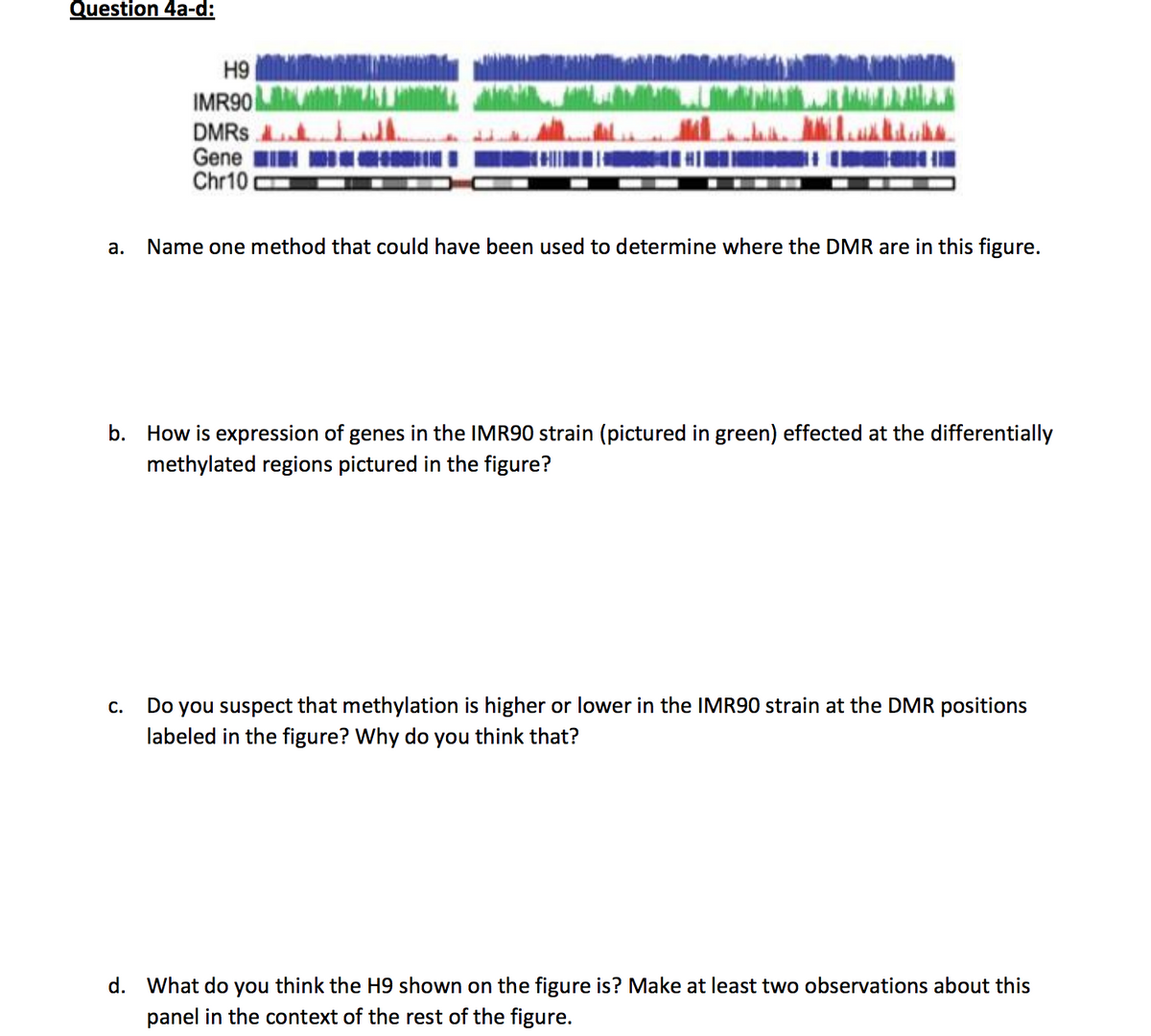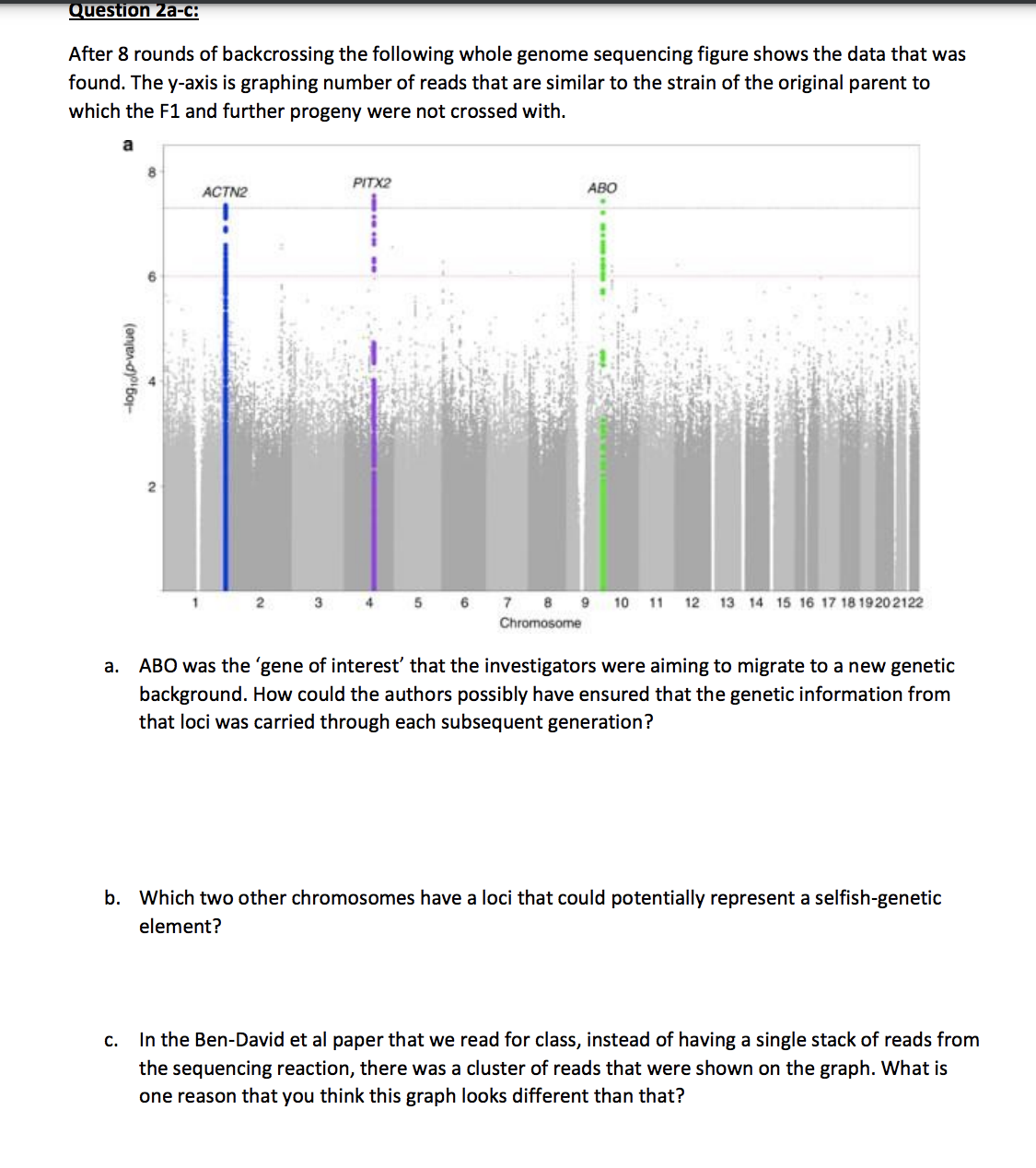Question 4a-d: H9 IMR90 AT ال ... DMRS Gene Chr10 a. Name one method that could have been used to determine where the DMR are in this figure. b. How is expression of genes in the IMR90 strain (pictured in green) effected at the differentially methylated regions pictured in the figure? C. Do you suspect that methylation is higher or lower in the IMR90 strain at the DMR positions labeled in the figure? Why do you think that? d. What do you think the H9 shown on the figure is? Make at least two observations about this panel in the context of the rest of the figure.
Molecular Techniques
Molecular techniques are methods employed in molecular biology, genetics, biochemistry, and biophysics to manipulate and analyze nucleic acids (deoxyribonucleic acid (DNA) and ribonucleic acid (RNA)), protein, and lipids. Techniques in molecular biology are employed to investigate the molecular basis for biological activity. These techniques are used to analyze cellular properties, structures, and chemical reactions, with a focus on how certain molecules regulate cellular reactions and growth.
DNA Fingerprinting and Gel Electrophoresis
The genetic makeup of living organisms is shown by a technique known as DNA fingerprinting. The difference is the satellite region of DNA is shown by this process. Alex Jeffreys has invented the process of DNA fingerprinting in 1985. Any biological samples such as blood, hair, saliva, semen can be used for DNA fingerprinting. DNA fingerprinting is also known as DNA profiling or molecular fingerprinting.
Molecular Markers
A known DNA sequence or gene sequence is present on a chromosome, and it is associated with a specific trait or character. It is mainly used as a genetic marker of the molecular marker. The first genetic map was done in a fruit fly, using genes as the first marker. In two categories, molecular markers are classified, classical marker and a DNA marker. A molecular marker is also known as a genetic marker.
DNA Sequencing
The most important feature of DNA (deoxyribonucleic acid) molecules are nucleotide sequences and the identification of genes and their activities. This the reason why scientists have been working to determine the sequences of pieces of DNA covered under the genomic field. The primary objective of the Human Genome Project was to determine the nucleotide sequence of the entire human nuclear genome. DNA sequencing selectively eliminates the introns leading to only exome sequencing that allows proteins coding.


Step by step
Solved in 2 steps









